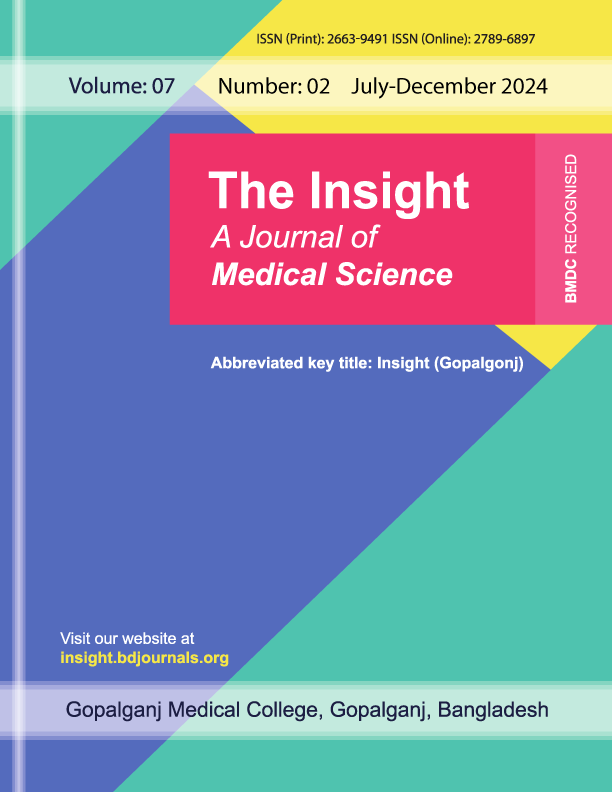A comparative Analysis of Socio-Demographics, Clinical Features, and Acute Phase Reactant (ESR, CRP, Serum Ferritin) in DHF and DSS Patients
Published 30-04-2025
Keywords
- Dengue hemorrhagic fever,
- Dengue shock syndrome,
- CRP,
- ESR,
- Ferritin
- Acute phase reactants ...More
Copyright (c) 2025 The Insight

This work is licensed under a Creative Commons Attribution 4.0 International License.
How to Cite
Abstract
Background: Dengue hemorrhagic fever (DHF) and dengue shock syndrome (DSS) are severe forms of dengue infection associated with significant morbidity. Acute phase reactants like ESR, CRP, and serum ferritin may play a role in predicting disease severity. Methods & Materials: This cross-sectional study was conducted in the Department of Medicine, Dhaka Medical College Hospital, from February to July 2020. A total of 140 patients diagnosed with DHF based on WHO 1997 criteria were enrolled using purposive sampling. Among them, 28 developed DSS. Data were collected using a structured questionnaire. ESR, CRP, and ferritin were measured during both critical and convalescent phases. Data were analyzed using SPSS v23. Results: Of the 140 patients, 51.43% were male. Most (58.57%) came from urban areas. Fever (100%), headache (84.29%), and rash (77.86%) were common symptoms. During the critical phase, mean ESR was significantly lower in DSS (8.01 mm/hr) compared to DHF (12.63 mm/hr, p<0.001). Mean CRP was significantly higher in DSS (36.63 mg/L) than DHF (20.1 mg/L, p<0.001). Ferritin was also significantly elevated in DSS (1503 ng/mL) compared to DHF (1213 ng/mL, p=0.04). Conclusion: Acute phase reactants, particularly CRP and serum ferritin, showed significant elevation in DSS and can serve as useful biomarkers in assessing the severity of dengue. ESR was significantly lower in DSS, likely due to hemoconcentration and DIC. These markers may aid in early identification of severe cases.



